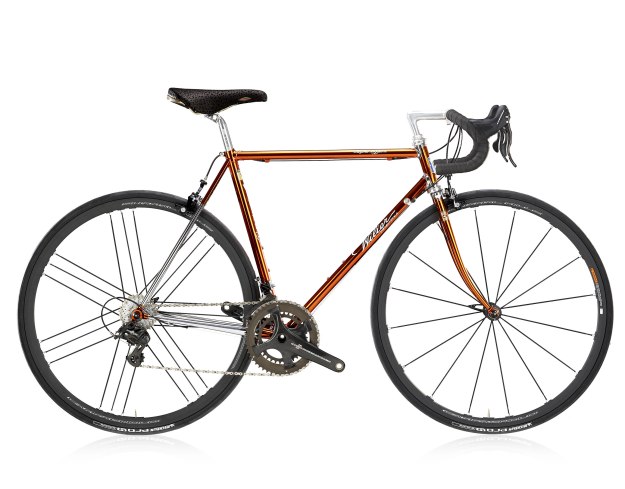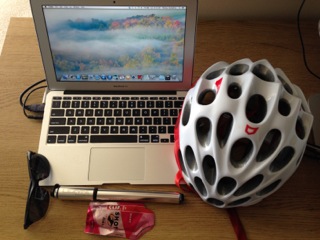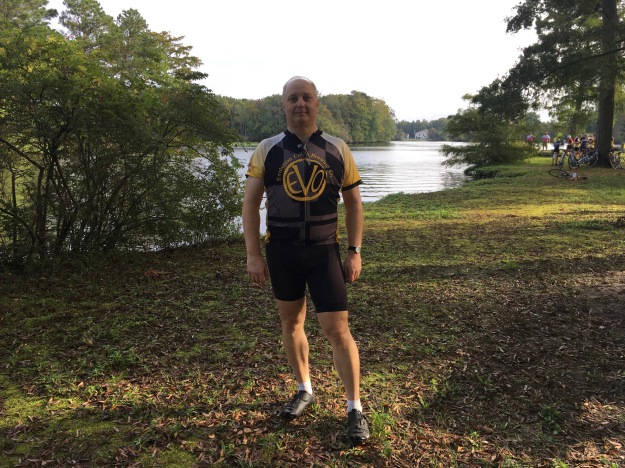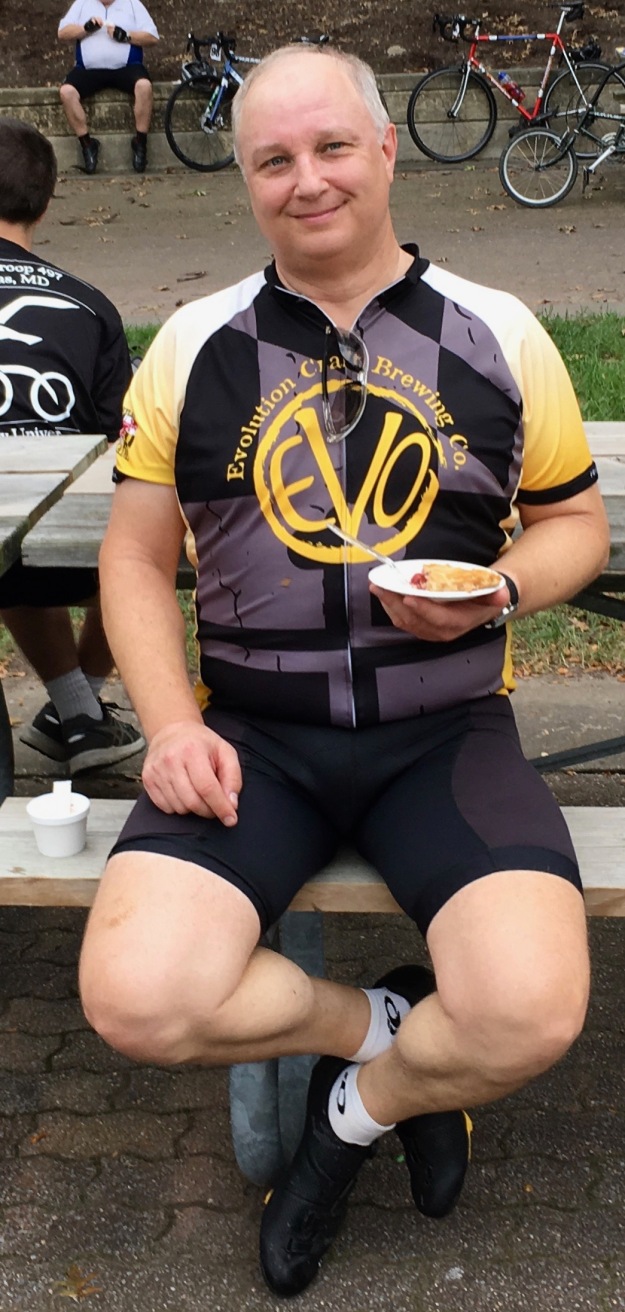When I take an interest in something, I learn about it. When I’m fascinated by a topic, I research. I become a student of history simply because there is always a story that goes deeper than what you can see. I also see art in everyday things. I appreciate aesthetics and craftsmanship, and I find beauty in many things. At this point in my life, I have started looking backward as well as forward. I often write about cycling; it’s a passion in my life that has defined my freedom as a child and my healthy lifestyle as an adult. Recently, as a result of my passion and my love of art and history and all that I enjoy about cycling, I have been consumed with a passion project. I’m having a new bicycle built.
The project began before I realized that it was forming. It started on rainy weekends and quiet evenings when my free time led me to read a book about cycling, or watch a race on television, or search the internet for video and information on random cycling topics. It grew at event rides when talking to other riders. It was fed by childhood memories, by the excitement I shared with others. It found purchase in my mind when reading about restoring bikes, classic bikes, racing and training, and the care I take in cleaning and maintaining my bicycle. It took shape from of an understanding of how I ride, why I ride, and where I ride. What I wanted was a modern classic.
It would have to be a bike to ride every day. A bike that I can feel comfortable on no matter where I ride. I don’t want something to put on a wall or hang from the ceiling to admire; I wanted to ride it when the road called me. I wanted it to be with me on adventures.
It would also have to be beautiful. It would have to speak to me. It would have to announce itself to others like me. It would have to blend art and history with passion and craftsmanship and joy.
What I wanted was a lugged steel frame. My first bike was steel. My first “racing” bike was steel, and even though I have never been a racer, steel bikes were raced by legends like Gino Bartali, Fausto Coppi, Eddy Merckx, Jacques Anquetil, Sean Kelly, Roger De Vlaeminck, Francesco Moser, Johan Museeuw and many others. Steel has history.
Steel also has comfort. Steel is renowned for a ride quality that is unlike any other material. I have a carbon fiber bike and an aluminum bike. They are fit to me, and fit is a major component of comfort. Most riders choose carbon or aluminum based on weight, with a secondary consideration of price. Steel is heaver than carbon and aluminum are. Lighter is an advantage. Carbon Frames are the flagship of any bike line because of weight and the ability to easily form it into lightweight, compliant and aerodynamic shapes. It’s made in a mold with layers of carbon fabric and epoxy. Aluminum is great for riders on a budget. It has the ability to be shaped, and is more comfortable now than the early aluminum bikes were. Aluminum was once considered a very harsh ride. It isn’t any longer. Excellent bikes are built of these materials. Then, there is steel. Steel may be heavy, but it is also elastic; meaning it will return to its original shape when deformed slightly by stress. It flexes. That is what leads to the forgiving ride quality of steel. It also lasts a very long time if maintained.
Steel is making a strong comeback in the cycling community. A “vintage” cycling community has popped up. “L’ Eroica” or “heroic” cycling events, where old steel masterpieces are ridden, remind us of cycling’s classic roots. I find the Eroica events to be inspiring. They look like fun. However, I’m not going for “vintage”. “Vintage” suggests original. What I’m going for is more accurately called “Retro” instead, where the look of vintage is blended with the advantages of modern features.
Custom frame builders are keeping steel relevant, too. A frame fit to your body will always be a good ride. If weight is the only factor, steel is at a disadvantage. If you’re not racing, weight means less, but it can tell on a climb. A rider can get a steel bike to weigh the same as a carbon bike by carrying one water bottle instead of two. Riders often forget that the difference in weight isn’t a lot. In any case, I don’t think of bike weight as an issue when I’m so large myself!
Apart from getting a custom built bike, there are two other ways to make a purchase. What most people do is buy a bike offered by a manufacturer. The manufacturer chooses the parts specification, the customer chooses a size, and the bike is fitted to them. That is the way most bikes are purchased now. There is an almost infinite variety to choose from. As I mentioned above, you can have a custom bike built. You choose the builder, get a custom frame built to your measurements and specification, and you choose parts like wheels and drivetrain, and what you get back is unique. This is expensive, but often the results are extreme works of art. The third way, the one I’ve chosen, is to get measured carefully for a frame size to order, then choose components and build the bike yourself or have a trusted bike technician do it for you. This is also expensive, but it can take less time than custom, and the results are also artistic, since many of these steel frames are made by artisans, too.
My choice is a frame by an Italian brand named Wilier. The frame is a Wilier Superleggera. This is a brand that has been building bikes since 1906, and has been raced in the Pro peloton. They’re known for their copper finishes, like the example below.

The frame I’m ordering will look like this one, but the wheels and components will be different!
The components I’m choosing? Modern Campagnolo. I’m going to have a quill stem and custom wheels, and components and wheels will be silver. The bike will be proudly Italian, and because so many Italian brands have remained true to their roots and offer steel frames, there are many excellent choices if you want to indulge in a similar passion project. To name a few:
Colnago Arabesque and Colnago Master: Two beautiful steel offerings from Colnago. Both have a classic look and a racing heritage. The Master has iconic star shaped tubes and incredible paintwork; the Arabesque has artistic lugs and a similar classic look.
DeRosa Nuevo Classico: This bike deserves the name “New Classic”. It is a thing of beauty with traditional geometry and an excellent finish.
Bianchi Tipo Corsa: This is a frameset from Bianchi – a brand building bikes since 1885, and known for a special color – Celeste. The Tipo Corsa comes in Celeste. For those who want a bike that pays homage to vintage cycling, Bianchi also makes the Eroica, a different blend of modern and vintage.
Masi Gran Criterium: Masi makes several models of the Gran Criterium from affordable entry level steel bikes to bikes that lean from vintage in style to modern.
There are other brands that offer steel road bikes and frames; too many to list here, but the options speak to the appeal of these steel retro bikes. There is something to be said for the latest bike tech. Aerodynamics, advances in materials and technology have made some wonderful bicycles, but there will always be room for classic design in the cycling community. As this passion project proceeds, I’ll add more content.





